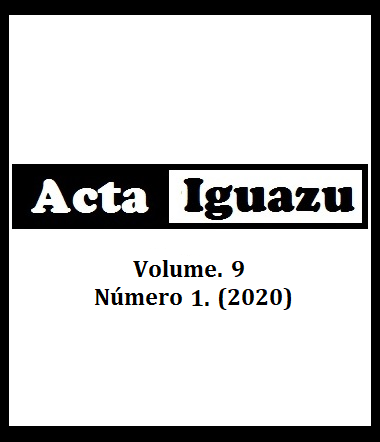Use of mufla oven calcination method in oil quantification of chia seeds
DOI:
https://doi.org/10.48075/actaiguaz.v9i1.22256
Agências de fomento
CNPq
Palavras-chave:
Salvia hispanica, oil meaning, soxhletResumo
Chia (Salvia hispanicaL.) is an annual herbaceous plant considered as natural omega-3 fatty acids source. To quantify this oil in seeds, a time-consuming method involving financial costs with chemical reagents is used. The objective of this work was verifying existence of correlation between the quantification of oil in chia seeds by means of the Soxhlet method with the ash mass of these seeds obtained by calcination in a muffle oven. For this, samples of chia seeds and the oil quantified by Soxhlet were collected. The same samples were calcined in ash. The simple correlation test was performed, obtaining linear regression. To method validation, a completely randomized design experiment was carried out. The treatments were to quantify the oil by the Soxhlet method and calcination in the muffle using the equation obtained. The objective was to verify the existence of correlation between the oil content of chia seeds, obtained by the Soxhlet method with ash content obtained after burning in the muffle and, therefore, the validation of this method of determination. There is a significant positive correlation between the oil content obtained by Soxhlet method and the ash mass of chia seed. By equation Y = -2.5319x + 16.518, it was noted that it is feasible to quantify the oil contentDownloads
Publicado
31-03-2020
Como Citar
SILVA, T. R. B. da; DUCHESKI, R. L. P.; SILVA, G. D. da; AMBROSANO, L.; GONÇALVES-JR, A. C.; SECCO, D.; ALVES, C. Z.; SANTOS, R. F. Use of mufla oven calcination method in oil quantification of chia seeds. Acta Iguazu, [S. l.], v. 9, n. 1, p. 108–112, 2020. DOI: 10.48075/actaiguaz.v9i1.22256. Disponível em: https://e-revista.unioeste.br/index.php/actaiguazu/article/view/22256. Acesso em: 29 maio. 2025.
Edição
Seção
ARTIGOS CIENTÍFICOS
Licença
Aviso de Direito Autoral Creative Commons
Política para Periódicos de Acesso Livre
Autores que publicam nesta revista concordam com os seguintes termos:
1. Autores mantém os direitos autorais e concedem à revista o direito de primeira publicação, com o trabalho simultaneamente licenciado sob a Licença Creative Commons Attribution que permite o compartilhamento do trabalho com reconhecimento da autoria e publicação inicial nesta revista.2. Autores têm autorização para assumir contratos adicionais separadamente, para distribuição não-exclusiva da versão do trabalho publicada nesta revista (ex.: publicar em repositório institucional ou como capítulo de livro), com reconhecimento de autoria e publicação inicial nesta revista.
3. Autores têm permissão e são estimulados a publicar e distribuir seu trabalho online (ex.: em repositórios institucionais ou na sua página pessoal) a qualquer ponto antes ou durante o processo editorial, já que isso pode gerar alterações produtivas, bem como aumentar o impacto e a citação do trabalho publicado (Veja O Efeito do Acesso Livre).
Licença Creative Commons
Esta obra está licenciada com uma Licença Creative Commons Atribuição-NãoComercial-CompartilhaIgual 4.0 Internacional, o que permite compartilhar, copiar, distribuir, exibir, reproduzir, a totalidade ou partes desde que não tenha objetivo comercial e sejam citados os autores e a fonte.


